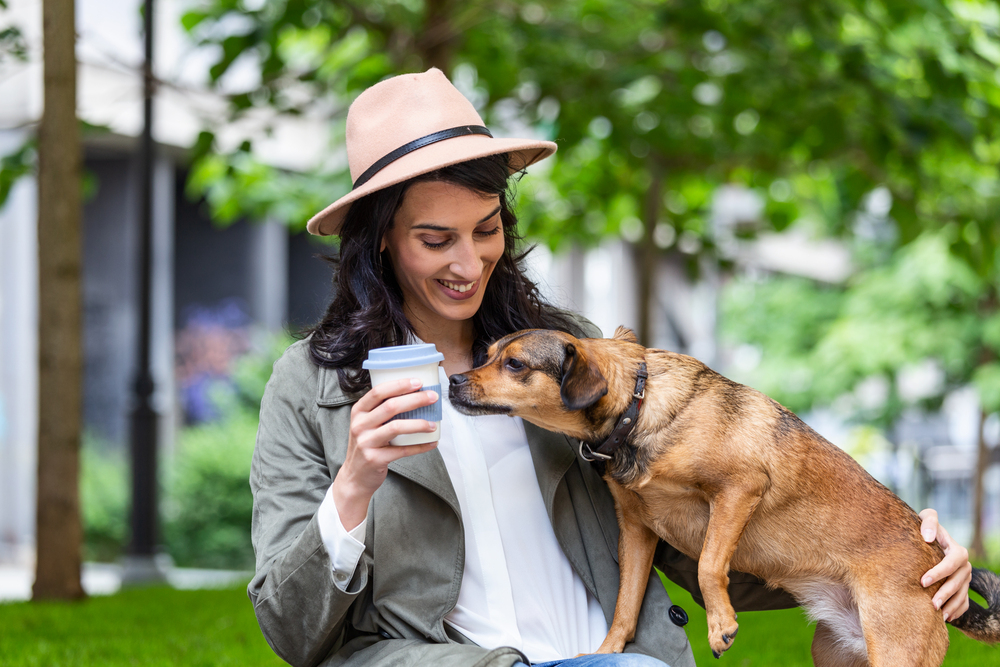Puppuccinos are taking the dog world by storm. These irresistible cups of whipped cream have popped up everywhere, becoming a must-have treat for pups and a social media sensation for their owners. Everywhere you look, there are pictures of happy dogs with creamy white mustaches.
But what exactly is a puppuccino, and are they really a good thing for our furry friends? While they look and sound delightful, it’s essential to consider if these sweet treats are truly healthy and safe for your dog. This post will explore the world of puppuccinos, explaining what they’re made of, any potential risks and how to make sure your dog enjoys them responsibly.
Ready to get the scoop on puppuccinos? Read on.
What Exactly Is a Puppuccino?
A classic puppuccino is a small cup filled with light and airy whipped cream, like a mini dessert just for dogs. While the traditional version is plain whipped cream, some variations might include a swirl of dog-friendly peanut butter or a dollop of plain yogurt for a different flavor and texture.
Interestingly, the puppuccino’s popularity is often linked to Starbucks, even though they don’t officially list it on their menu. Many Starbucks baristas will happily whip up a little cup of cream for your canine companion if you ask nicely. Dogs adore puppuccinos because they’re a sweet, creamy special treat just for them. Owners love them too, as they make dogs happy and provide perfect photo opportunities to share online.
If your dog gets anxious in social situations like café visits, explore our article Easing Dog Anxiety: Anti-Anxiety Medications for Dogs.
Are Puppuccinos Safe for Dogs?
Before you rush out to get your dog a puppuccino, think about its health. Whipped cream is dairy, and many dogs have trouble digesting lactose, which is the sugar found in milk. In turn, this can lead to stomach issues. If your dog has digestive issues, it might not be a good idea.
Then, there’s the sugar content. A little sugar is usually fine, but too much too frequently can contribute to weight gain and other health issues over time. It’s also worth noting that some whipped creams contain artificial sweeteners or flavorings. Certain artificial sweeteners, especially xylitol, are extremely toxic to dogs. Make sure any whipped cream someone offers your dog is free from these chemicals.
Ultimately, the key with puppuccinos is portion control. They should be an occasional indulgence, not a regular part of your dog’s daily diet. Think of them like dessert — a sometimes treat, not an everyday meal.
As you treat your pup this spring, be aware of seasonal dangers and learn how to keep your pet safe with our article, Springtime Safety Tips: Protecting Your Pup This Season.

Pup Cup Alternatives
If you’re concerned about the ingredients in store-bought whipped cream, you can easily make homemade puppuccinos. Try whipping up some plain, unsweetened coconut cream or plain yogurt for a dog-friendly version. These options are often easier on your dog’s sensitive stomach.
Beyond puppuccinos, there are plenty of other healthy and safe treat alternatives. Frozen blueberries, unseasoned pumpkin, carrot sticks and small pieces of apple can be refreshing and nutritious. You can also find a wide variety of commercially made dog treats that are specifically formulated for canine health.
When it comes to treats, the best advice is to chat with your veterinarian. They can help you determine what treats are appropriate and how much is too much for your furry friend.
Want to create even more special moments with your dog beyond puppuccinos? See Spring Activities to Strengthen Your Bond With Your Dog.
Enjoying Puppuccinos Responsibly
If you decide to treat your dog to a puppuccino, moderation is vital. Start with a very small amount to see how your dog reacts. Keep an eye out for any signs of digestive upset, such as loose stools or excessive gas. When possible, choose plain, unsweetened whipped cream to minimize added sugars and potential artificial ingredients. Always monitor your dog while it enjoys its treat, and make sure it doesn’t eat too much too quickly.
Most importantly, remember that puppuccinos should be a special occasion treat, such as on birthdays or after a vet visit. By following these simple guidelines, you can let your dog enjoy a puppuccino safely and responsibly, making it a fun and occasional experience.
Puppuccinos and Beyond: Prioritizing Your Dog’s Health
Puppuccinos are undeniably popular, and it’s easy to see why dogs and owners love them. Just remember that enjoying them responsibly is all about balance and moderation. While a puppuccino now and then is fine, your dog’s overall health and well-being should always be the top priority. That means feeding it a balanced diet, giving it lots of attention, providing plenty of exercise and making sure it gets enough mental stimulation.
Speaking of well-being, have you considered how the Halo Collar can contribute to your dog’s safety and happiness? Halo Collar offers GPS tracking and smart fence technology, giving you peace of mind during walks and outdoor adventures. Its wireless dog fence keeps your dog safely within the boundaries you set, preventing it from wandering into dangerous areas. Plus, with GPS tracking, you can always know your dog’s location, bringing you reassurance wherever your adventures take you.










